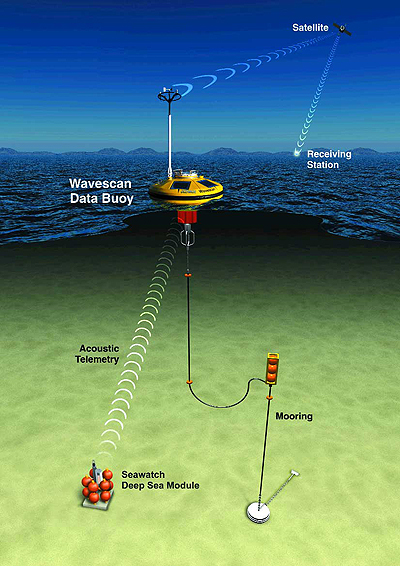A year on from the disaster of Boxing Day 2004 and the first elements of an advanced tsunami detection system are in place in south-east
With scientists warning that the risk of another devastating quake is as high as ever, the new system, designed and developed by offshore monitoring expert Fugro Oceanor, could play an important role in lessening the impact of any future tsunamis in the area.
Frode Berge, a director with the Norwegian firm, said that the first of three deep-sea tsunami detection systems is now fully operational. The device, located in the Andaman Sea, around 500km from the coast of Malaysia’s Langkawi Island and 60km from Banda Aceh, Indonesia, will be followed later next month by two more systems in the Sulu Sea and the South China Sea.
Berge’s team has been working closely with Malaysian satellite specialist ATSB, the main contractor appointed by the Malaysian government to implement its National Tsunami Early Warning System programme.
The technology consists of a deep-sea module containing water pressure sensors and a processor. This continuously monitors the information gathered by the sensors and can detect when a tsunami is occurring. ‘A tsunami has a unique character and the processor is able to distinguish one from other events,’ said Berge.
The module then sends data to a buoy anchored on the surface directly above the unit, and data from the buoy is transmitted in real-time via the Inmarsat satellite system to the Malaysian Meteorological Department Headquarters.
Berge said that the system could give up to two hours’ advance warning of a tsunami striking the shore, but this would depend on its strength, the distance from the shore and the depth of water between the coast and the epicentre. The system is currently installed at a depth of 500m, although Berge said that it is rugged enough to be used at depths of up to 6,000m.
This system is essentially an advanced version of Fugro’s Seawatch technology — an ocean monitoring system that is used widely to monitor tidal patterns and biological or chemical parameters. Berge said that Seawatch is particularly popular in the
Meanwhile, the Norwegian team is also working on a number of near-coast alert systems for the Malaysian government. These automatic tidal stations will be equipped with conventional tidal gauge technology to measure the tide and changes in the water level in coastal regions, providing a last-minute warning of approaching tsunamis. Berge said their intended location has been confirmed and that installation will begin within the next couple of months.





IEA report claims batteries are ‘changing the game’
Oh I don't know. The typical waiting time outside of A&E for admitting patients would give them plenty of time to recharge … ?